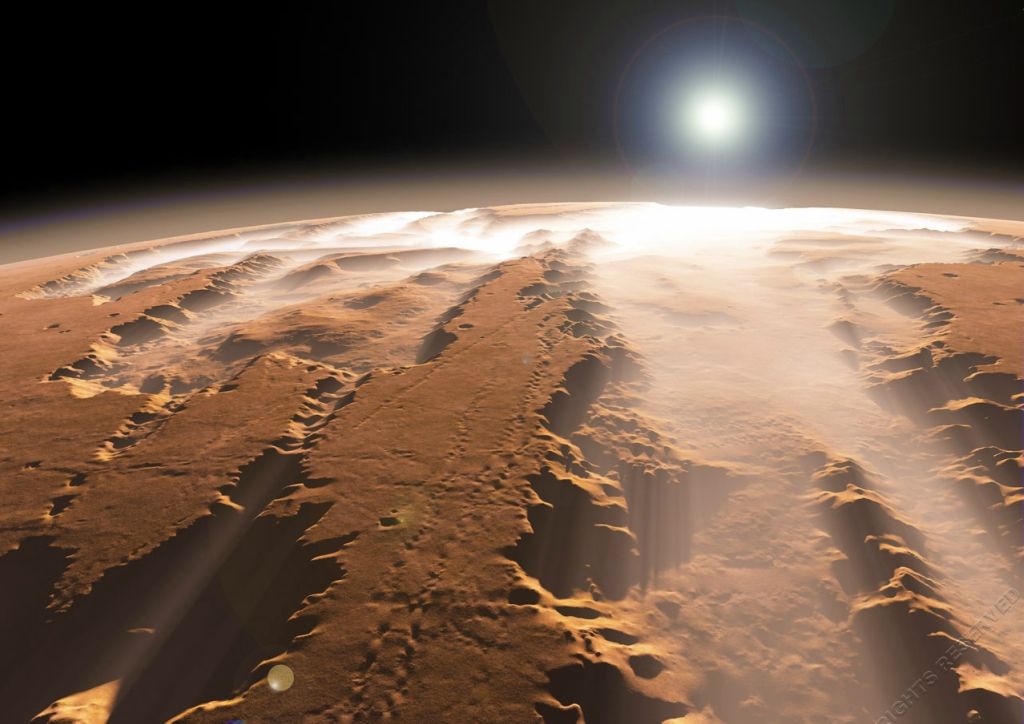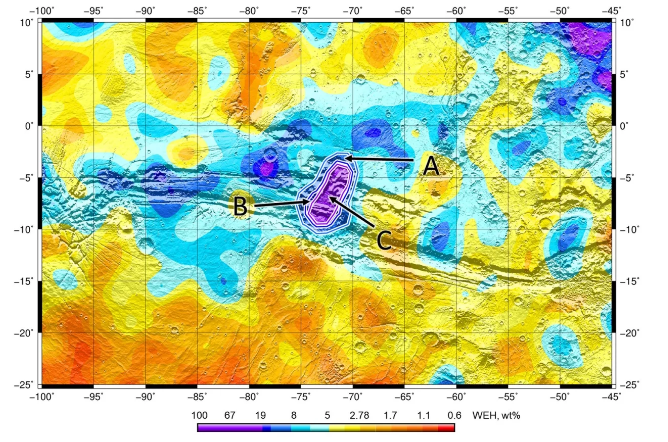Huge groundwater reserves discovered in the Grand Canyon of Mars

On Mars, a huge deposit of new water has been discovered in a formation commonly known as the Red Planet's Grand Canyon. The Trace Gas Orbiter (TGO) orbiter discovered an area the size of the Netherlands, where water can make up 40 percent of the surface material.
While it is believed that Mars once had a huge ocean on its surface, today it is drier than any desert on Earth. But there may still be water on the Red Planet—mostly in the form of ice around the poles, or possibly in saltwater lakes deep underground, though evidence for the latter idea is mixed.
Near the equator, less water is found in the form of ice or hydrated minerals in soils close to the surface. But the newly discovered cache is much larger -- and wetter -- than anything found so far.
In a series of observations from May 2018 to February 2021, TGO detected the new water supply using an instrument called the High Resolution Epithermal Neutron Detector (FREND). The instrument detects neutrons escaping from the ground, which can serve as an indicator of the hydrogen content of the soil -- and therefore the water content.
"Neutrons are formed when high-energy particles called galactic cosmic rays hit Mars; dry soil releases more than wet soil," said study co-author Alexey Malakhov. more neutrons are emitted, so we can determine the amount of water in the soil by looking at the neutrons released by the soil. "FREND's unique observational technology provides higher spatial resolution than previous measurements of this type, which allows us to now see bodies of water that we haven't seen before." "

Valles Marineris is the largest canyon in the solar system, 10 times longer and 5 times deeper than our Grand Canyon. It was here that FREND discovered a water-rich area of approximately 41,000 square kilometers (15,800 square miles). Within 1 meter (3.3 feet) of the topsoil, up to 40 percent of the material appears to be water, which the team thinks is most likely in the form of ice.
"We found that the central part of the Vale Mariner was filled with water -- much more than we expected," Malakhov said. "This is very similar to permafrost regions on Earth, where water ice has been stuck under dry soil due to persistent low temperatures."
The team thinks finding water in this part of Mars is very exciting. Future missions to the Red Planet, including manned missions, tend to focus on regions near the equator, where there is so much water within 1 meter of the surface that it is very accessible. By contrast, polar sediments are several kilometers deep.
I assume that the following research on the presence of water will be done at the following levels: the Greek Basin and the Eridania region
In terms of the possible presence of water, I believe these two formations are no less interesting than the Martian Canyon.
Lake Eridania is a hypothetical ancient lake on Mars with an area of about 1.1 million square kilometers. Lake Eridania dried up about 5 billion years ago
Valles Marineris Mars - Valley of the Mariners. Russian (available with Chinese subtitles):
Source used:
- https://en.wikipedia.org/wiki/Valles_Marineris
- https://habr.com/ru/post/494038/
- https://habr.com/ru/news/t/598307/

Like my work? Don't forget to support and clap, let me know that you are with me on the road of creation. Keep this enthusiasm together!
